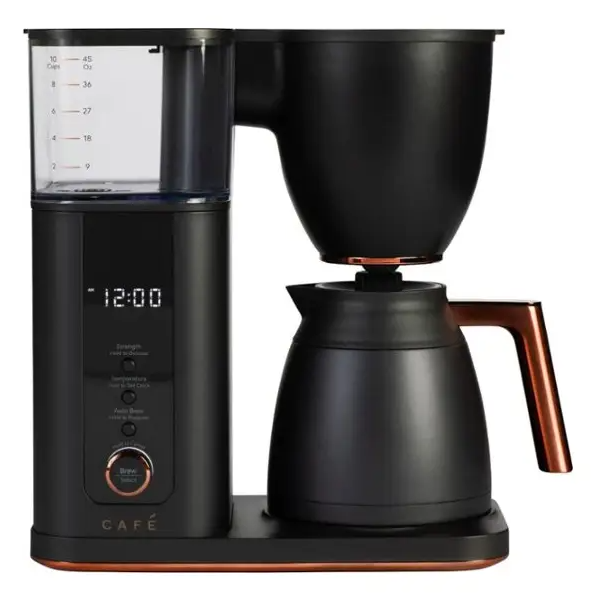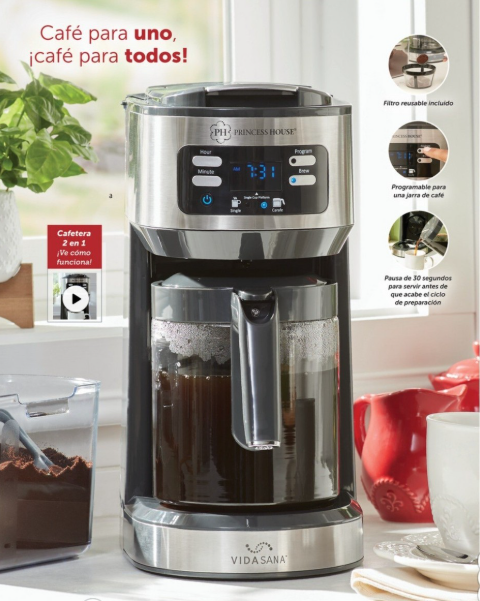Knowing how to reset a coffeemaker can breathe new life into your machine, resolving issues like erratic brewing, unresponsive controls, or error codes. Whether your coffeemaker is acting sluggish or simply needs a fresh start, resetting it is a key troubleshooting step that can save you time and money. In this comprehensive guide, we’ll walk you through how to reset a coffeemaker for various models, including drip, single-serve, and espresso machines. We’ll also cover essential coffeemaker troubleshooting tips, coffeemaker maintenance practices, and safety precautions to keep your machine brewing perfectly. For more expert advice on getting the most out of your appliance, visit our coffee guide.
Why Reset Your Coffeemaker?
Resetting a coffeemaker can fix a range of common problems, from programming glitches to brewing inconsistencies. Over time, mineral buildup, stale coffee oils, or electronic hiccups can disrupt performance, making a reset necessary. Understanding how to reset a coffeemaker is especially useful for modern machines with digital displays or smart features, which may lock up or display errors. This process often restores factory settings, clears memory, or recalibrates the system, ensuring your coffeemaker operates like new. Plus, it’s a simple step that complements regular coffeemaker cleaning and coffeemaker setup, helping you avoid costly repairs.
General Steps for How to Reset a Coffeemaker
While specific reset methods vary by brand and model, most coffeemakers follow a similar process. Before diving into brand-specific instructions, here’s a universal approach to how to reset a coffeemaker that works for most drip, pod, and espresso machines:
- Unplug the Machine: Disconnect your coffeemaker from the power source for at least 10–15 minutes. This allows the internal electronics to discharge, clearing minor glitches. Place it on a stable, dry surface to ensure coffeemaker safety.
- Remove Residual Water and Grounds: Empty the water reservoir and remove any used grounds or pods. This prevents clogs during the reset and aligns with good coffeemaker maintenance.
- Check for Error Indicators: If your machine has a digital display, note any error codes before resetting. These can guide coffeemaker troubleshooting if issues persist.
- Reconnect and Power On: Plug the coffeemaker back in and turn it on. For programmable models, you may need to reset the clock or timer as part of how to use a coffeemaker post-reset.
- Run a Water Cycle: Fill the reservoir with clean water and run a brew cycle without coffee grounds. This flushes the system, ensuring it’s ready for use.
If these steps don’t resolve the issue, consult your manual for model-specific instructions. Below, we’ll cover resets for popular brands and types, along with additional coffeemaker tips to keep your machine in top shape.
Brand-Specific Instructions for How to Reset a Coffeemaker
Different brands and models have unique reset procedures, often outlined in the user manual. If you’ve misplaced your manual, here’s how to reset some of the most popular coffeemakers in 2025, based on their features and design.
1. Keurig (Single-Serve Pod Machines)
Keurig machines, known for their convenience, may need resets for issues like stuck displays or pump failures. Here’s how to reset a coffeemaker like a Keurig:
- Power Off and Unplug: Turn off the machine and unplug it for 5 minutes to clear the system.
- Remove Reservoir: Detach the water reservoir and empty it. Check for debris in the filter or entry point, as clogs often cause errors.
- Press Buttons (Model-Specific): For models like the Keurig K-Elite or K-Supreme, hold the 8oz and 12oz buttons simultaneously for 3–5 seconds until the display resets. For older models, power on and off repeatedly may suffice.
- Run Cleaning Cycles: Refill the reservoir with water and run 2–3 cycles without a pod to clear internal lines. This doubles as coffeemaker cleaning.
If the “descale” light persists, descale with a vinegar solution before resetting again. For persistent issues, refer to our coffeemaker troubleshooting tips at coffeemakert.com.
2. Ninja (Drip and Hybrid Models)
Ninja coffeemakers, like the DualBrew Pro, combine drip and pod brewing, making resets slightly more involved. To reset:
- Unplug for 10 Minutes: Disconnect the machine to reset the internal processor.
- Clear Components: Remove the carafe, water reservoir, and any grounds or pods. Rinse to ensure no blockages.
- Reset Settings: On models with digital displays, hold the “Clean” and “Brew” buttons for 5 seconds until the screen flashes or resets. For non-digital models, power cycling is usually enough.
- Test Brew: Run a water-only cycle to confirm functionality. Adjust settings like brew strength post-reset for optimal how to brew coffee in a coffeemaker.
Ninja’s thermal carafe models benefit from regular coffeemaker maintenance to prevent reset-related issues.
3. Cuisinart (Drip and Programmable Machines)
Cuisinart’s budget-friendly drip machines, like the PerfecTemp, are simple to reset:
- Power Down: Unplug for 15 minutes to reset electronics.
- Empty and Clean: Remove the carafe and filter basket, ensuring no leftover grounds clog the system.
- Hold Clean Button: For models with a “Clean” indicator, press and hold the button for 5 seconds to reset after descaling. For basic models, plug in and power on to restore factory settings.
- Flush System: Run two water cycles to clear any residue, aligning with coffeemaker cleaning best practices.
Cuisinart models often signal cleaning needs; resetting after descaling resolves most performance issues.
4. Breville (Espresso and Precision Brewers)
Breville’s advanced machines, like the Barista Express, require careful resets due to their complex settings:
- Unplug and Wait: Disconnect for 10–20 minutes to clear memory.
- Clear Portafilter and Tank: Remove coffee grounds from the portafilter and empty the water tank. Check for blockages in the steam wand.
- Manual Reset: For digital models, press “Power” and “Clean Me” simultaneously for 3 seconds. Non-digital models reset via power cycling.
- Test with Water: Run a water shot through the group head to ensure flow, critical for espresso coffeemaker troubleshooting.
Breville’s built-in diagnostics may require a full descale before resetting fully restores function.
5. Nespresso (Pod Espresso Machines)
Nespresso machines, like the Vertuo, have specific reset protocols:
- Power Off: Unplug for 10 minutes.
- Empty Capsule Container: Remove used pods and rinse the water tank.
- Factory Reset: For Vertuo models, press the brew button 3 times within 2 seconds. For Original line, hold the button for 5 seconds until lights flash.
- Run Cleaning Cycle: Brew without a capsule to flush the system, supporting coffeemaker maintenance.

Coffeemaker Troubleshooting: When Resetting Isn’t Enough
If resetting doesn’t fix your coffeemaker, try these coffeemaker troubleshooting steps before seeking repairs:
- Weak Brew: Check for clogged filters or old grounds. Run a vinegar cycle to descale, as mineral buildup weakens flavor.
- No Power: Test the outlet with another device. Inspect the cord for damage and ensure proper plugging.
- Leaks: Tighten reservoir seals or replace gaskets. Overfilled tanks often cause spills.
- Error Codes: Look up codes in the manual. Persistent errors may require professional service.
- Bitter Taste: Clean thoroughly to remove stale oils, a common issue resolved with coffeemaker cleaning.
Regular maintenance reduces the need for resets. For more solutions, check our brewing tips.
Coffeemaker Maintenance to Prevent Reset Needs
Prevent issues that require resetting with proper coffeemaker maintenance:
- Daily Cleaning: Empty grounds and rinse removable parts after each use.
- Monthly Descaling: Use a 1:1 vinegar-water solution to clear mineral buildup. Run 2–3 water cycles afterward.
- Filter Care: Replace paper filters or clean reusable ones weekly to avoid clogs.
- Exterior Wipe: Use a damp cloth to clean surfaces, avoiding electronics.
- Water Quality: Use filtered water to reduce scale, enhancing how to brew coffee in a coffeemaker.
Consistent coffeemaker cleaning extends your machine’s life and minimizes glitches.
Coffeemaker Safety Tips During Reset
Resetting a coffeemaker involves electrical components, so prioritize coffeemaker safety:
- Unplug Before Handling: Always disconnect to avoid shocks.
- Dry Environment: Keep the machine away from water sources during resets.
- Avoid Hot Parts: Let the machine cool before touching carafes or heating elements.
- Stable Surface: Place on a flat counter to prevent tipping.
- Child Safety: Keep out of reach during maintenance to avoid accidents.
Following these ensures a safe reset process, protecting you and your coffeemaker.
Special Considerations for Portable Coffeemakers
If you own a portable coffeemaker, resetting is simpler but requires care:
- Battery Models: Remove batteries (if applicable) and wait 5 minutes before reinserting.
- Manual Reset: Most lack digital displays, so unplugging or power cycling suffices.
- Check Connections: Ensure USB or adapter cables are secure post-reset.
Portable models benefit from minimal coffeemaker maintenance but still need occasional cleaning to avoid clogs.

When to Seek Professional Help
If resetting and coffeemaker troubleshooting don’t resolve issues like persistent error codes, electrical faults, or mechanical failures, contact the manufacturer or a technician. Check warranty status—many coffeemakers offer 1–2 years of coverage. Avoid DIY repairs on complex components to maintain coffeemaker safety.
Conclusion: Master How to Reset a Coffeemaker for Better Brews
Learning how to reset a coffeemaker is a quick fix for most common issues, from sluggish brewing to programming errors. By following our step-by-step guide, tailored to popular brands like Keurig, Ninja, and Breville, you can restore your machine’s performance with ease. Pair resets with regular coffeemaker cleaning and coffeemaker maintenance to prevent future glitches and enjoy consistent, delicious coffee. Whether you’re troubleshooting a drip model or a portable coffeemaker, these tips keep your brews on track. For more expert advice, visit coffeemakert.com and brew better today!